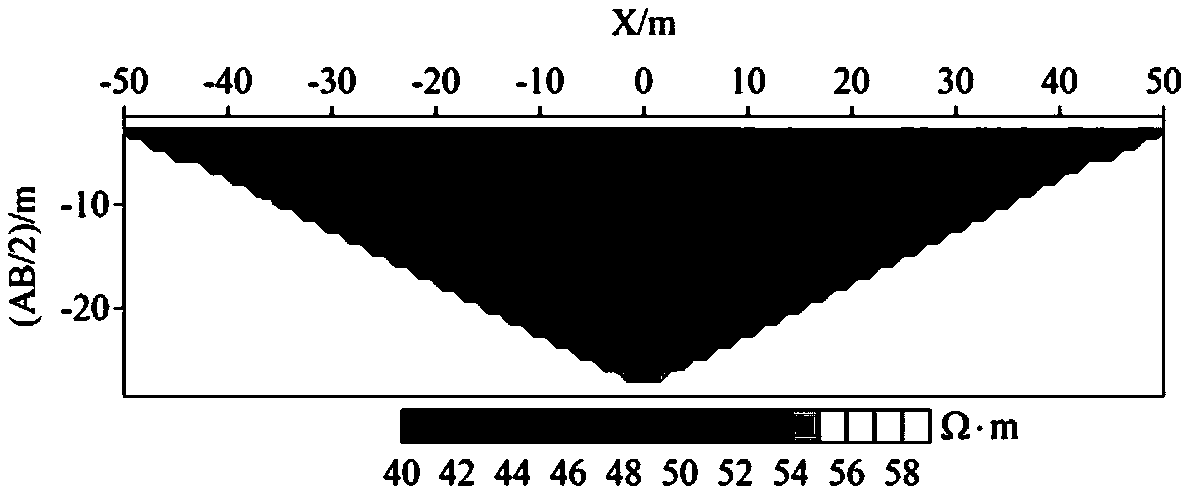DC resistivity element-free forward modelling method based on partition of unity quadrature (PUQ)
A technology of DC resistance and resistivity, which is applied in the field of DC resistivity elementless forward modeling based on unit decomposition and integration, which can solve the problems of loss of elementless nature, difficulty in using background element segmentation methods, and affecting simulation accuracy.
- Summary
- Abstract
- Description
- Claims
- Application Information
AI Technical Summary
Problems solved by technology
Method used
Image
Examples
Embodiment Construction
[0099] The embodiments of the present invention will be described in detail below with reference to the accompanying drawings, but the present invention can be implemented in various ways defined and covered by the claims.
[0100] see figure 1 , the present invention relates to a DC resistivity element-free forward modeling method based on unit decomposition integration, comprising the following steps:
[0101] Step 1. Establish a two-dimensional geoelectric model:
[0102] First, according to the distribution of medium resistivity in the two-dimensional geoelectric model, the geometric shape of the resistivity anomaly body and the terrain relief shape, the calculation domain 1 is established, and the electrode position, observation device and observation point position are set; in the calculation domain, the two The dimensional geoelectric model adopts a set of randomly distributed nodes ( figure 1 The reference numeral 6) in the method is discretized, and the nodes are ar...
PUM
 Login to View More
Login to View More Abstract
Description
Claims
Application Information
 Login to View More
Login to View More - R&D Engineer
- R&D Manager
- IP Professional
- Industry Leading Data Capabilities
- Powerful AI technology
- Patent DNA Extraction
Browse by: Latest US Patents, China's latest patents, Technical Efficacy Thesaurus, Application Domain, Technology Topic, Popular Technical Reports.
© 2024 PatSnap. All rights reserved.Legal|Privacy policy|Modern Slavery Act Transparency Statement|Sitemap|About US| Contact US: help@patsnap.com










